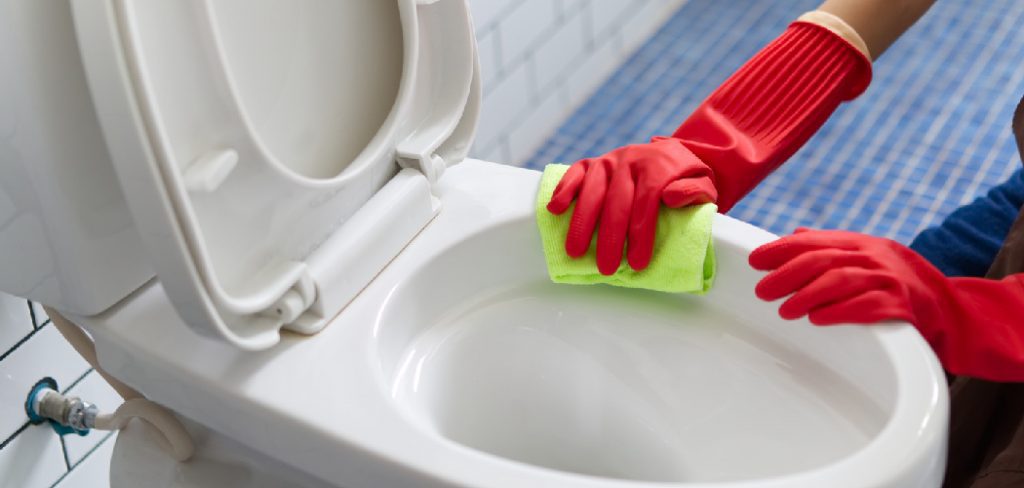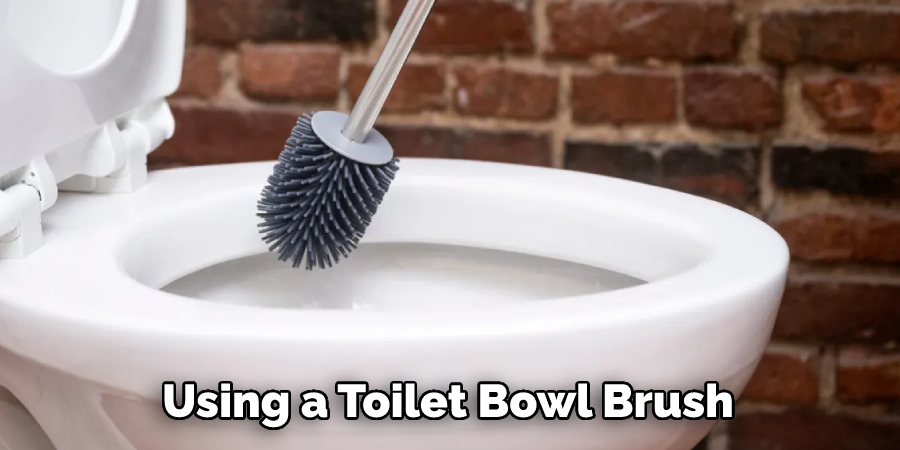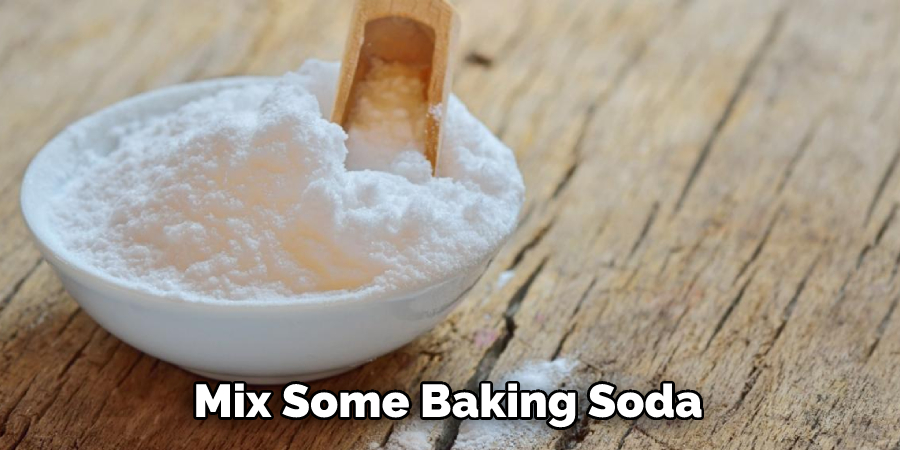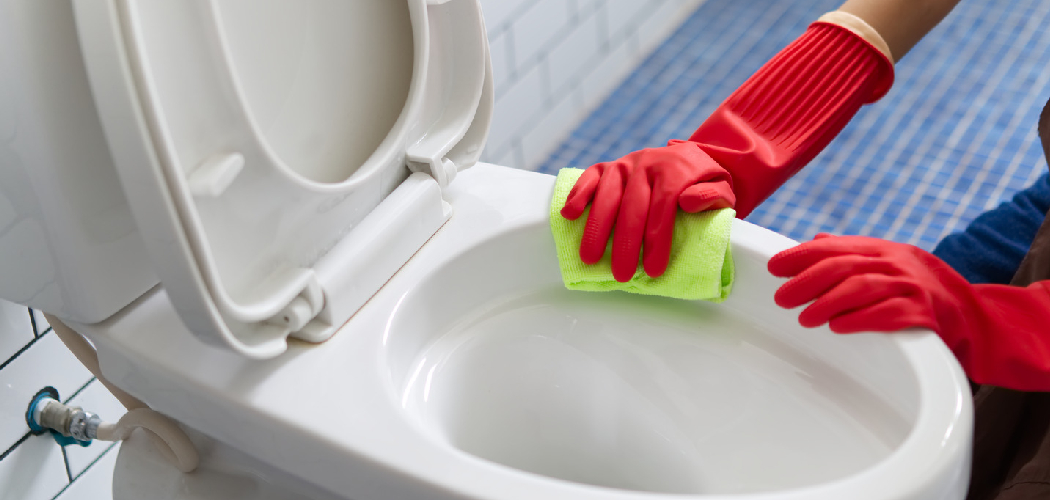Rust stains are not only unsightly and embarrassing, but they can also be difficult to remove from toilet bowls. If you’re looking for an effective solution that will prevent rust stains from appearing in the first place, then you’ve come to the right place! In this blog post, we’ll provide a step-by-step guide detailing how to prevent rust stains in toilet bowl and make them sparkling clean.

Learn all about the importance of proper maintenance of pipes and fittings that could otherwise cause potential clogging or other problems caused by rust buildup in household plumbing systems.
We’ll also tell you which common everyday substances should be avoided at all costs when it comes to keeping your toilet clean as well as give advice on best practices for properly cleaning any bathroom fixture with hard water present. Keep reading for our top tips on preventing future rust-staining troubles in no time!
Why Does My Toilet Bowl Have Rust Stains?
Rust stains in a toilet bowl are often caused by hard water or poor air circulation around the base of the toilet. Hard water contains large amounts of iron, calcium, and magnesium, which can cause rust to form on porcelain surfaces. Poor air circulation causes condensation to occur near the base of the toilet, and this can cause rust stains to accumulate over time. In addition, an old or failing wax seal between the toilet and floor can result in mineral deposits accumulating around the base of the toilet and eventually leading to rust stains.
Fortunately, there are steps you can take to prevent rust stains from appearing in your toilet bowl. Regular cleaning and preventive maintenance should help keep your toilet looking its best while keeping it free from rust stains. Below are some tips on how to prevent rust stains from forming in your toilet bowl.
1. Clean the toilet regularly using a non-abrasive cleaner and brush. Regularly cleaning your toilet will help remove any dirt, grime, and mineral deposits that could lead to rust staining of the porcelain surface.
2. Change out or replace the wax seal between the floor and toilet as needed. A faulty or worn wax seal can cause water seepage near the base of the toilet which may lead to mineral deposits, resulting in rust stains.
3. Install an air vent fan near the bathroom area if possible, as this will help reduce condensation around the base of the toilet, which can fuel rust staining.

4. Use a water softener to reduce the amount of iron, calcium, and magnesium in your water supply. This will help minimize rust staining over time.
By following these tips, you should be able to keep your toilet bowl free from rust stains for many years to come. However, if you notice any rust stains beginning to form on the porcelain surface of your toilet bowl, it’s important to act quickly and address the issue as soon as possible in order to prevent further damage from occurring. If you’re unsure how to deal with existing rust stains or need additional advice on preventing new stains from forming, consult a professional plumber for assistance.
10 Methods How to Prevent Rust Stains in Toilet Bowl
1. Use a Rust-Resistant Toilet Bowl Cleaner:
When shopping for toilet bowl cleaners, always look for a product that is specifically designed to prevent rust stains. Many brands are now offering rust-resistant formulas that will help keep your toilet sparkling and free of unsightly discoloration.
If the rust-resistant cleaner you choose is not specifically formulated to prevent staining, be sure to follow up with a thorough scrubbing of the bowl to help ensure the rust stains will not linger.
2. Clean Your Toilet Bowl Regularly:
The best way to prevent rust stains in your toilet bowl is to clean it regularly. It’s important to not only scrub the porcelain surface but also give special attention to the inside crevices as well. Doing this will help you remove any water droplets or other particles before they have a chance to cause staining.
Consider using a toilet bowl brush to ensure the best reach and cleanliness. However, it is also important to use a cleaner specifically designed for toilets. Many household cleaners are too harsh or acidic and can cause discoloration or damage to the porcelain.

3. Check Your Water Supply Lines:
If you notice an increase in rust staining after having had your water supply lines replaced, it could be caused by metal particles that were left behind during the installation process. To prevent this from happening in the future, make sure to check your new pipes for any rust or other contaminants before using them.
While you’re at it, also check the faucets and shower heads connected to your water supply lines for any potential sources of corrosion. If you find any, take steps to address the issue before it can lead to rust staining in your toilet bowl. Make sure to also inspect your water supply lines periodically for any signs of corrosion or damage.
4. Install a Water Softener:
If the source of your rust staining is hard water, then installing a water softener system can help reduce the amount of iron and other minerals present in your supply. This will not only help keep your toilet bowl looking clean but also help improve overall water quality throughout your home.
To learn more about water softener systems, contact a local plumbing professional for assistance. Although the initial installation may be costly, the long-term benefits of investing in a water softener far outweigh the cost. Try to get a few estimates from local companies to find the best value for your money.
5. Use Vinegar or Lemon Juice:
Both vinegar and lemon juice are acidic solutions that can help remove stains caused by iron buildup in your toilet bowl. Simply fill up a spray bottle with either liquid, apply it around the affected area, and let it sit for a few minutes before scrubbing away.
If the area is particularly stained, you can mix some baking soda in with either liquid to create a paste that’s more effective at removing rust stains. You can also use a rag or toilet brush to help rub away any remaining discoloration. Be sure to rinse away any excess vinegar or lemon juice after cleaning to avoid further damage.

6. Use a Rust Stain Remover:
If you are unable to remove the rust stains yourself, then you may want to try using a specially formulated rust stain remover. Most of these products come in an aerosol can and will require you to coat the entire surface of your toilet bowl with the product before scrubbing away at the stain.
Be sure to wear protective gloves when using a rust stain remover since it can be harsh on your skin and eyes. Follow the instructions on the label of the product for the best results. If you are not satisfied with the result, you may need to repeat the process until the stain is removed.
7. Try Baking Soda Paste:
A paste made from baking soda and water can be applied directly onto stubborn rust stains as well. It’s important to make sure that your paste is thick enough so that it doesn’t run off when applied. Allow it to sit for a few minutes before scrubbing it away with a toilet brush or other cleaning tool.
8. Use Citric Acid:
Citric acid is another great remedy for removing rust stains from your toilet bowl. Simply dissolve one tablespoon of citric acid into two cups of water and pour the solution over the affected area. Leave it on for about 10 minutes before rinsing it off with warm water.
9. Try Borax:
Borax can also be used as an effective rust stain remover in your bathroom, but it’s important to be sure to use it sparingly since borax can cause permanent damage to porcelain surfaces when used excessively. To use, mix three tablespoons of borax with one cup of warm water until it forms a paste and applies directly to the stain.
10. Invest in a Water Filter:
Lastly, installing a water filter system is another way to prevent rust staining from occurring in the future. Not only will this help keep your toilet sparkling clean but it also reduce any unpleasant taste that may come from old pipes.

A water filter will reduce the amount of sediment and minerals entering your home’s water supply, which can help prevent rust stains from appearing in the first place. Make sure to change your filter regularly in order to get optimal performance.
Conclusion
When it comes to rust stains in your toilet bowl, prevention is key. A few simple steps can easily be implemented to help get rid of and prevent any future rust build-up. Using the correct cleaner and a brush on a regular basis can save you from having to use harsher methods in the future.
It’s also important to keep an eye on the lemon juice calcium deposits that often end up occurring as well. Thanks for reading our blog post on how to prevent rust stains in toilet bowl! We hope you found it helpful and informative.

